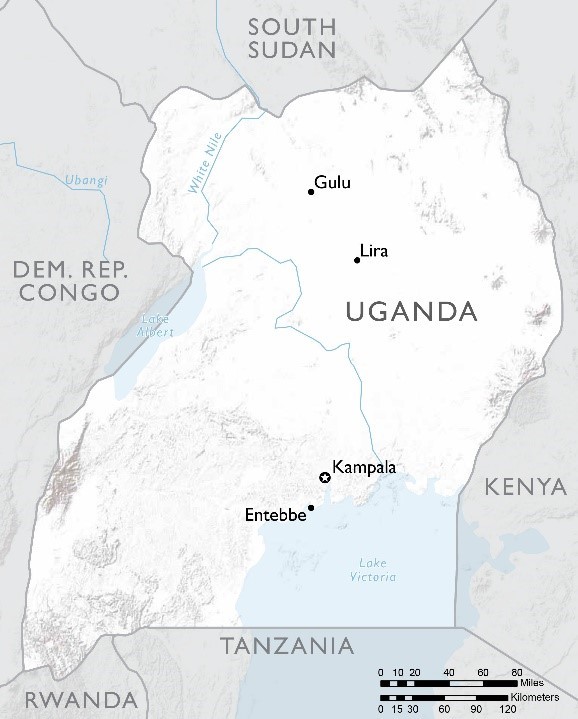- What We Do
- Agriculture and Food Security
- Democracy, Human Rights and Governance
- Economic Growth and Trade
- Education
- Ending Extreme Poverty
- Environment and Global Climate Change
- Gender Equality and Women's Empowerment
- Global Health
- Water and Sanitation
- Working in Crises and Conflict
- U.S. Global Development Lab

August 7, 2017
Food Security Situation
- Uganda hosts the largest population of refugees and asylum-seekers in Africa. As of July 2017, more than 1.3 million people displaced from other nations are currently seeking refuge in Uganda, of whom nearly 978,000 are South Sudanese.
- According to the USAID-funded Famine Early Warning Systems Network (FEWS NET), most South Sudanese refugees in Uganda would be experiencing Crisis (IPC Phase 3)* levels of food inseucrity without humanitarian assistance. Newly arrived refugees currently receive a full monthly ration of emergency food assistance from the UN World Food Program (WFP). However, due to funding constraints, WFP is only able to provide half rations to refugees who arrived in Uganda prior to July 2015.
-
Uganda's poorest sub-region, Karamoja, suffers from chronic food insecurity, erratic rainfall, decades of conflict, and recurrent drought. Poor households in Moroto, Napak, and Kaabong districts are projected to experience Crisis (IPC Phase 3) levels of food insecurity through the end of the lean season in August.
-
In southern and central Uganda, food security among poor households has improved from Stressed (IPC Phase 2) to Minimal (IPC Phase 1) levels as farmers begin to collect their crops, according to FEWS NET. However, agricultural production is projected to be 15 to 30 percent below average during the first season, which is harvested in June and July, this year due to below-average rainfall and the impact of fall armyworm, an invasive pest.
Food Assistance Programs
-
With support from USAID's Office of Food for Peace (FFP), WFP provides emergency food assistance to more than 1.3 million refugees and asylum-seekers in northern and southwestern Uganda. FFP's contributions to WFP, which include both U.S. in-kind food and locally and regionally purchased food, help increase food consumption and prevent acute malnutrition among the refugees and asylum-seekers.
-
FFP also supports approximately 234,000 food-insecure Ugandans in Karamoja through its two development programs with ACDI/VOCA and Mercy Corps. These programs aim to increase access to food, strengthen livelihoods, improve the nutritional status of children and pregnant and lactating women, and reduce the incidence of conflict through a variety of activities which address agriculture, markets and small businesses, infrastructure, maternal and child health, and water, sanitation, and hygiene.
Food for Peace Contributions
Total Contributions:
| U.S. Dollars | Metric Tons | |
|---|---|---|
| Fiscal Year 2017 | $77.4 million | 82,595 MT |
| Fiscal Year 2016 | $43.0 million | 36,700 MT |
| Fiscal Year 2015 | $34.4 million | 35,536 MT |
*The Integrated Food Security Phase Classification (IPC) is a standardized tool that aims to classify the severity and magnitude of food insecurity. The IPC scale, which is comparable across countries, ranges from Minimal—IPC I—to Famine—IPC 5.







Comment
Make a general inquiry or suggest an improvement.